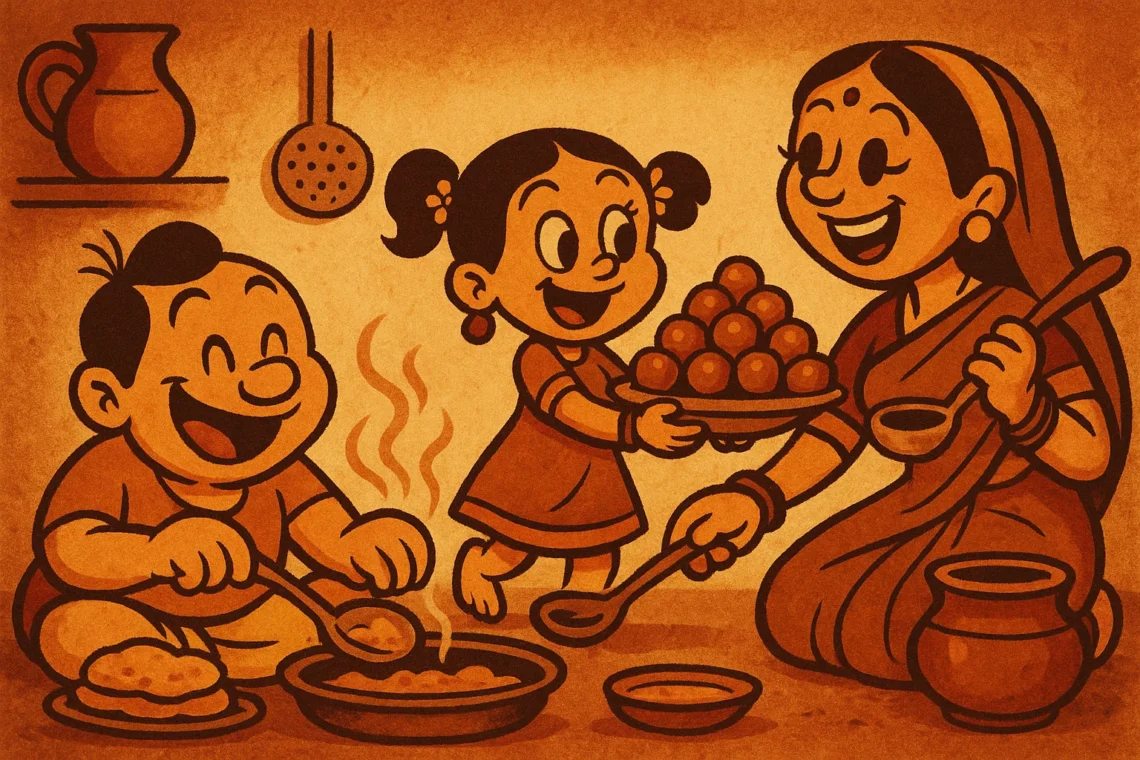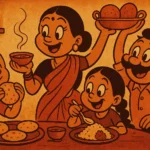Some families organize their fridge by shelf, others by food group. In Indian households, the refrigerator is governed by an unspoken—but fiercely enforced—container hierarchy. It’s not written anywhere, but you learn it young: some containers are for daily dal, some for weekend leftovers, and some are for mythical food items no one has seen since Diwali 2017 but that cannot be thrown out due to reasons related to “sentiment.”
The first rule of this chilly caste system? The steel dabba is king. Preferably one with a snug-fitting lid that takes two hands, a knee, and a prayer to open. These containers are the heart of the fridge—usually on the middle shelf, slightly dented, often containing yesterday’s bhindi, and capable of surviving nuclear war. They don’t stain, they don’t break, and they are trusted like that one uncle who shows up on time and always brings mithai.
Old Ice Cream Tubs: The Great Pretenders
Then we have the imposters—the colorful plastic boxes that used to house ice cream. These are the tricksters of the fridge world. You open one, dreaming of butterscotch, only to find frozen chana dal or a lone boiled potato. Betrayal never looked so pastel. And yet, these tubs are everywhere. No one ever buys them. They just multiply. Like gujiyas in Holi season or WhatsApp forwards in family groups.
There’s something both comforting and annoying about these tubs. They don’t stack well. The lids never match. But they’re the default choice for large quantities—imli chutney, homemade sambar, or the ambitious three-liter batch of rasam that only one person in the house actually wants to eat for five days straight. You don’t question their existence. You just adapt.
Clear Plastic Boxes: The Middle Class of Storage
These are the aspirational ones. Bought during a burst of domestic optimism—probably inspired by a YouTube kitchen organization video or a Big Bazaar sale—these containers are see-through, stackable, and come in matching sets. But within a month, half the lids go missing, one box melts slightly near the edge from a microwave mishap, and the others start smelling vaguely of garlic.
They occupy that uncertain middle shelf. Not important enough to be top-tier steel, not lowly enough to be discarded ice cream plastic. They are filled with things like half-used coriander, dry curry leaves, or one suspicious gulab jamun swimming in sugar syrup.
The Forgotten Back Row
Every Indian fridge has a back row. The cold graveyard. Containers that haven’t seen light in months. No one knows what they contain, and no one is brave enough to find out. “Don’t open that!” is all you’ll hear if you try. These containers hold food that’s been elevated to relic status. Not to be consumed—just remembered.
There’s usually one container wrapped in three layers of cling film for no reason. Another might be double-boxed—plastic inside steel, like a Russian doll of leftovers. The contents are probably unidentifiable by now. But still, we don’t throw them away. Because someone, someday, might say, “Wait, wasn’t there some coconut chutney from last month?” and you’ll need it.
Condiment Corner: The Land of Eternal Jars
And then there’s the side shelf—the condiment corner. Glass bottles of pickle, half-squeezed tubes of tomato ketchup, a jar of ghee with a spoon permanently wedged inside. Sometimes there’s a green chutney in a mystery bottle that you don’t remember making but definitely used last night. This corner is lawless. New things get added. Nothing gets removed. Ever.
My current fridge in Austin has inherited all this baggage. There are exactly three old hummus tubs being used to store lemon wedges, soaked moong dal, and one rogue green chili. I still use steel containers for proper food and can’t bring myself to throw away the box that once housed a family-sized serving of kulfi. It now holds rice. Of course.
A System Only We Understand
To an outsider, our fridges might look chaotic. But there’s a logic to it. A rhythm. You know which steel dabba holds the dal, which plastic tub has the sabzi, and which ancient jar contains the pickle that’s older than your cousin’s child. You may not label anything, but you don’t need to. This is intuition, not science.
The container hierarchy isn’t about utility—it’s about identity. These aren’t just boxes. They’re memory holders. Symbols of habit, tradition, leftovers, and love. Some still carry the scent of the dish they first held. Some carry the stains of turmeric that no detergent can remove. And all of them carry a story—sealed, stacked, and sitting quietly until dinner time.
Born in Mumbai, now stir-frying feelings in Texas. Writes about food, memory, and the messy magic in between — mostly to stay hungry, sometimes just to stay sane.












